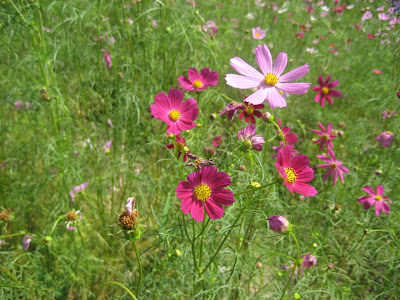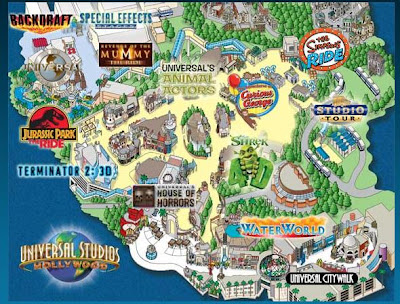Day 5: One Day Trip to Gyeongju
On Day 5 of Leo's visit, we got out of Busan to visit a nearby city - Gyeongju/庆州/경주. It takes only an hour's bus ride (3000won) from Nopodong bus terminal to reach Gyeongju, which was very convenient. Gyeongju is a thousand year old city, which was the capital city of Silla (ancient kingdom of Korea). While Melaka's history is only 500 years, Gyeongju's history is 992 years. There's so many historical sites and relics to visit here.
The Gyeongju city tour is operated by Cheonma Travel Agency 천마관광 and can be booked through phone reservation here:
Phone Reservation: +82-54-743-6001
Adult ticket costs 15,000won. Another additional 10,500won for entrance fees and buffet lunch.
I booked the Course 3 city tour:
Course 3> Departs at 10:00 and returns at 18:00
Bulguksa Visitor Center → Bomun complex (drive-by point of interest) → Gyeongju Station (10:50) → Gyeongju Bus Terminal (11:00) → Poseokjeong → Daereungwon (Cheonmachong) → Cheomseongdae → Seokguram Grotto → Bulguksa Temple → Bomun complex (pass) → Gyeongju Station → Gyeongju Bus Terminal
The Gyeongju city tour is operated by Cheonma Travel Agency 천마관광 and can be booked through phone reservation here:
Phone Reservation: +82-54-743-6001
Adult ticket costs 15,000won. Another additional 10,500won for entrance fees and buffet lunch.
I booked the Course 3 city tour:
Course 3> Departs at 10:00 and returns at 18:00
Bulguksa Visitor Center → Bomun complex (drive-by point of interest) → Gyeongju Station (10:50) → Gyeongju Bus Terminal (11:00) → Poseokjeong → Daereungwon (Cheonmachong) → Cheomseongdae → Seokguram Grotto → Bulguksa Temple → Bomun complex (pass) → Gyeongju Station → Gyeongju Bus Terminal
 Upon arriving at the Gyeongju Bus Terminal, we walked to the opposite street to find Cheonma Travel Agency 천마관광 and waited for the tour bus to pick us up at 11am.
Upon arriving at the Gyeongju Bus Terminal, we walked to the opposite street to find Cheonma Travel Agency 천마관광 and waited for the tour bus to pick us up at 11am.Poseokjeong
Our first stop was Poseokjeong/鲍石亭, which means "abalone shaped stone pavilion". At first I thought it was just a stupid longkang, but I was so wrong. Poseokjeong was a royal pavilion in which Silla kings held banquets for the nobels. Now the pavilion is no longer there, but the abalone-shaped stone water canal remains. This site served as the royal pleasure ground, on which the kings and nobles floated drinking cups in the canal. Whenever the cup stopped in front of someone, he would have to recite a poem there and then. This game, called Yusanggoksuyeon, was believed to have originated from China. However, other than Poseokjeong, there is no other sites that remain till this day.


Daereungwon (Cheonmachong)
Around Gyeongju, even in the downtown area, it is not uncommon to see huge grass mounds everywhere. Those are actually the ancient tombs of Silla kings and queens. Eerily, it suddenly dawned upon me that we were walking around in the Valley of the Dead, but then the tombs are maintained so well that it feels that walking in a park instead.
Of these tombs, the only tomb open to visitors is the Cheonmachong/天马冢, which means "heavenly horse tomb". The tomb got its name from the picture of a flying white horse painted on a saddle, which was excavated from the tomb in 1973.
Of these tombs, the only tomb open to visitors is the Cheonmachong/天马冢, which means "heavenly horse tomb". The tomb got its name from the picture of a flying white horse painted on a saddle, which was excavated from the tomb in 1973.


 Interior of the tomb. The tomb has some kind of a damp smell which I think is what the guide book refers to as "the breath of a millennium years"... haha.
Interior of the tomb. The tomb has some kind of a damp smell which I think is what the guide book refers to as "the breath of a millennium years"... haha. The gold crown, which according to the guide book, is the biggest and most luxurious gold crown that was ever excavated. At the time of excavation, it was found on the head of the dead dude.
The gold crown, which according to the guide book, is the biggest and most luxurious gold crown that was ever excavated. At the time of excavation, it was found on the head of the dead dude.Cheomseongdae
Cheomseongdae/瞻星台 is the oldest astronomical observatory in East Asia and was built during the reign of Silla Queen Seondeok 顺德皇后. The diameter from the bottom gradually decreases till the top until it becomes a smooth curved body line. A square shape and a circle each symbolize the ground and the sky.

Saw a field full of pretty flowers nearby the observatory.



Seokguram Grotto
Seokguram Grotto was designated a UNESCO World Heritage Site in 1995. It is a stone temple built by Kim Daesung for his past life parents. The carved stones were piled up in a dome shape and covered with earth soil to give the cave look.
The highlight of this grotto is the big Buddha statue that was "built like weaving silk out of stone" and the beautiful and tender features of Buddha. IMHO, this UNESCO Heritage Site is a must-visit site because of the Buddha, but I didn't take any photos of it out of reverence for the statue.
The highlight of this grotto is the big Buddha statue that was "built like weaving silk out of stone" and the beautiful and tender features of Buddha. IMHO, this UNESCO Heritage Site is a must-visit site because of the Buddha, but I didn't take any photos of it out of reverence for the statue.
 Bulguksa Temple
Bulguksa TempleThe last stop on our itinerary was the Bulguksa Temple/佛国寺 which is very nearby Seokguram Grotto. This place looks gorgeous with its red leaves in autumn.

 Haetalgyo Bridge, describing the path to reach Nirvana from Sabha (present suffering world), is located on the way to the Bulguksa Temple. Love the weeping willow.
Haetalgyo Bridge, describing the path to reach Nirvana from Sabha (present suffering world), is located on the way to the Bulguksa Temple. Love the weeping willow. And then in one section of Bulguksa, we saw pebble piles everywhere... Koreans stack pebbles to make a wish...
And then in one section of Bulguksa, we saw pebble piles everywhere... Koreans stack pebbles to make a wish...
 Finally, the last thing to do in Gyeongju is to buy Gyeongju bun - red bean biscuit!
Finally, the last thing to do in Gyeongju is to buy Gyeongju bun - red bean biscuit!








Comments
Melaka, where it all began
vs
Gyeongju, the breath of a milennium years.
Which would win?
http://expatabundance.blogspot.com/2011/07/abundance-gos-summer-destinations.html
thanks!